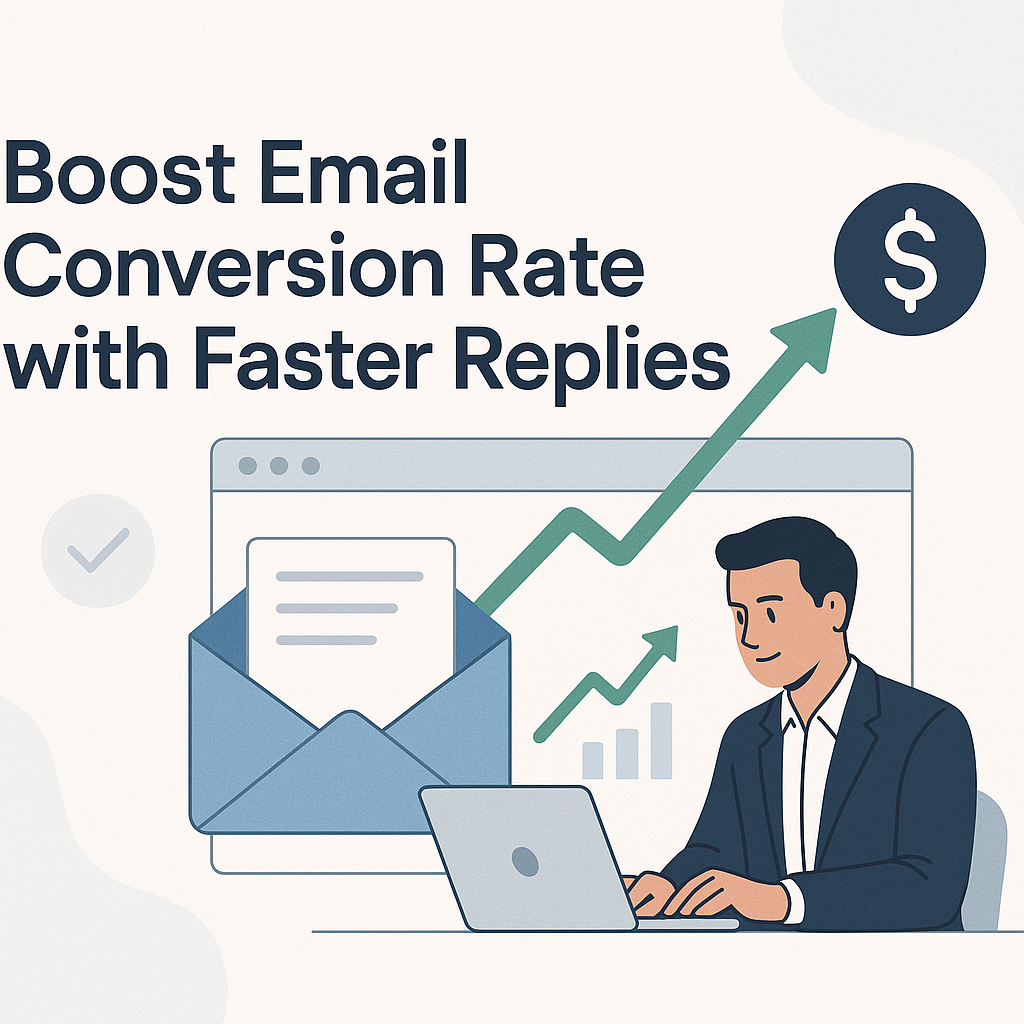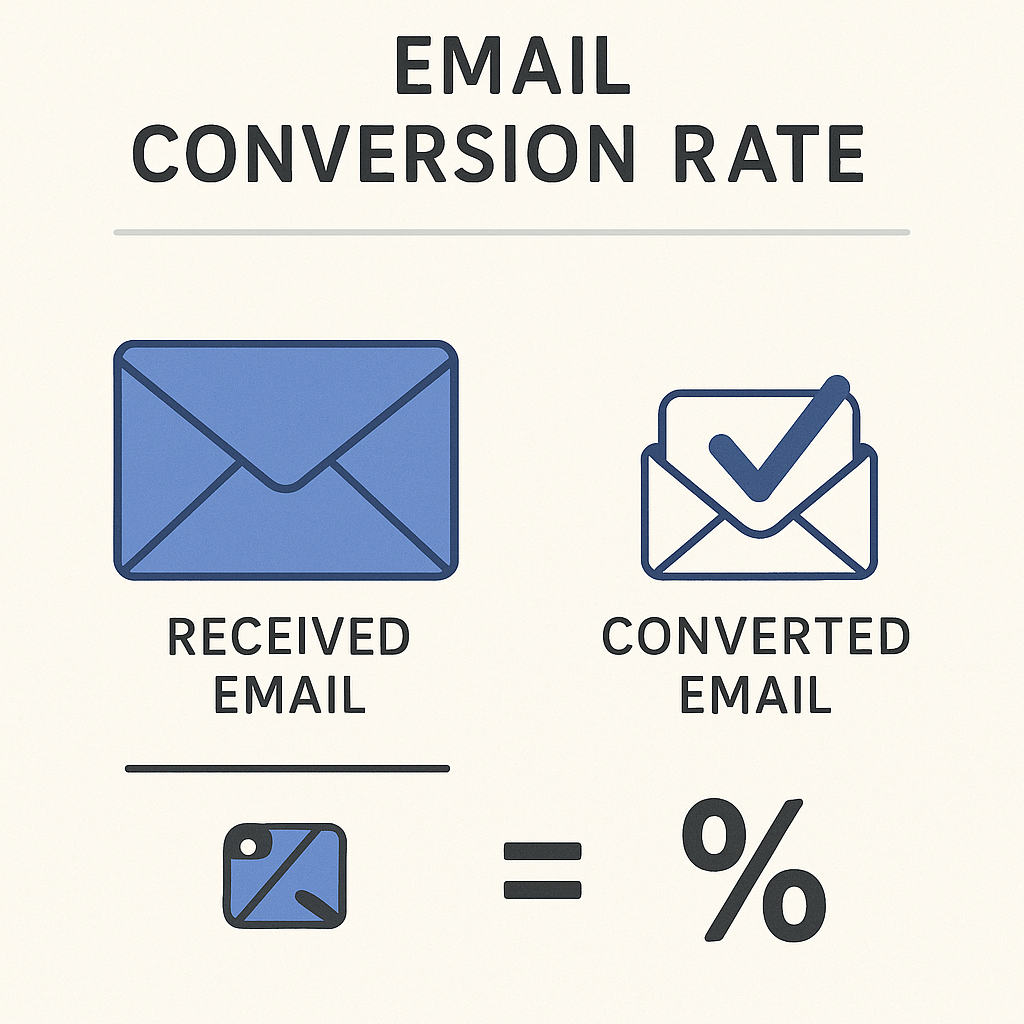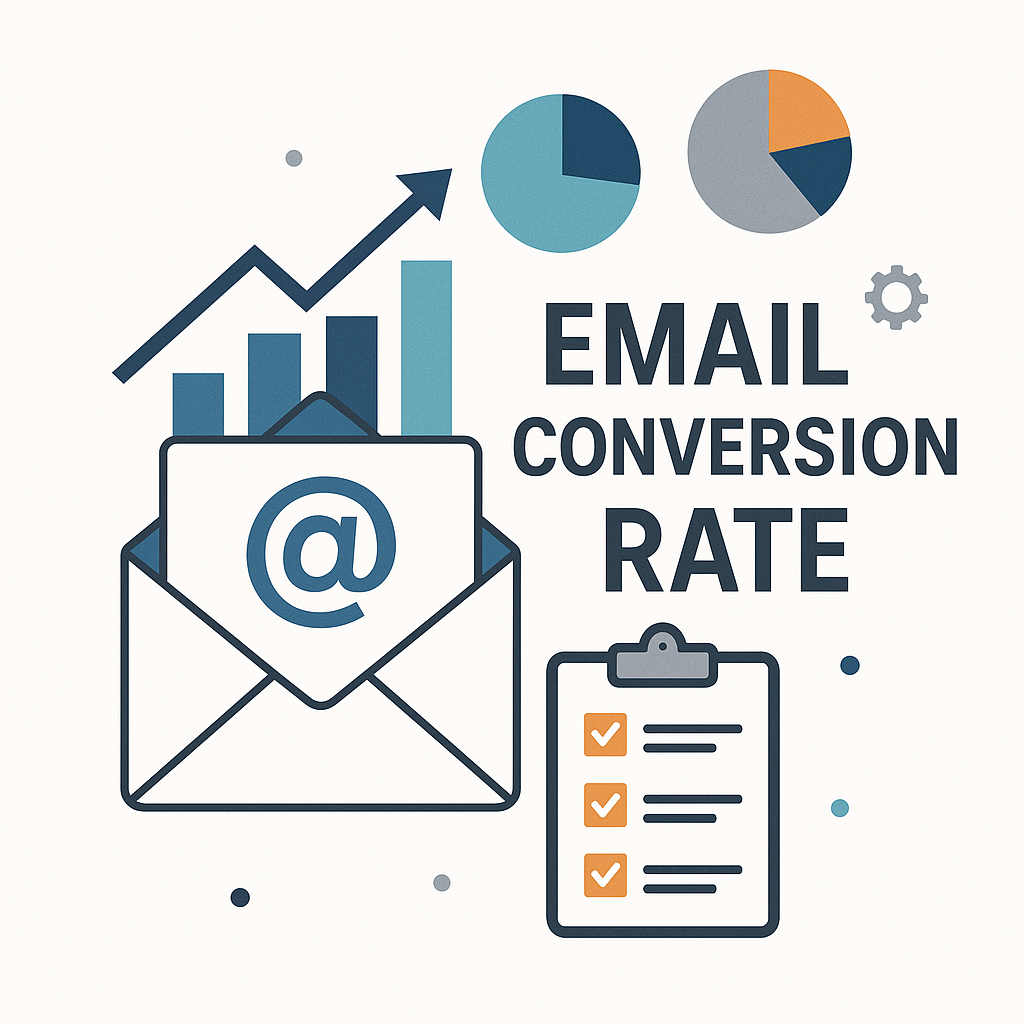Boost Email Conversion Rate with Faster Replies

Imagine a potential customer reaching out to your business. They've browsed your website, they're intrigued by your product or service, and they're ready to take the next step. Then… silence. Days pass, their initial enthusiasm wanes, and they inevitably turn to a competitor who was quicker to respond. This isn't just a minor inconvenience; it's a significant missed opportunity, a direct drain on your company's revenue, and a clear indicator that you might be overlooking a critical economic driver: the speed of your email replies.
In today's fast-paced digital world, the "Economics of Reply Speed" is a powerful concept that directly impacts your bottom line. It’s about understanding that every moment a potential lead or customer waits for a response is a moment their intent, their interest, and potentially their wallet, drifts away. Mastering your email response time isn't just about good customer service; it's a strategic imperative that can dramatically boost your email conversion rate, enhance customer satisfaction, and improve overall business efficiency. This article delves into why prompt communication is vital, how to achieve it, and how leveraging modern tools can transform your email management into a revenue-generating powerhouse.
Understanding the Link: Reply Speed and Conversion Rates
The connection between how quickly you respond to an email and the likelihood of a positive outcome, such as a sale or a resolved customer issue, is profound. It touches on psychology, urgency, and perceived value. An email conversion rate is a metric that measures the percentage of email recipients who take a desired action after opening an email. This action is often a specific conversion goal, like buying a product or signing up for a service, as defined by resources like Human.marketing.
The Psychology of Promptness
When a prospect or customer sends an email, their engagement level is at its peak. They have a question, a need, or a desire, and they are actively seeking a solution. This is the moment of highest receptiveness. Delaying your response acts as a cooling agent, diminishing their urgency and making them more susceptible to distractions or alternative options.
Research highlights the dramatic impact of speed. For instance, studies suggest that responding to inquiries within the first five minutes can increase conversion rates by as much as 21 times compared to responding after 30 minutes. This is because at the five-minute mark, the prospect is still actively engaged and motivated to learn more. These aren't just numbers; they represent tangible revenue gains tied directly to your communication speed. As noted by Superhuman, a 1-minute response time can lead to a staggering 391% increase in conversions.
Gaining a Competitive Edge
In a crowded marketplace, being the first to respond offers a distinct competitive advantage. It positions your business as proactive, attentive, and professional. Prospects often evaluate businesses not just on their products or services, but also on their responsiveness. A quick reply can be the deciding factor that steers a lead towards you rather than a competitor.
Nurturing Leads Effectively
Faster email responses are crucial for effective lead nurturing. They allow sales professionals to engage prospects while their interest is high, ask qualifying questions, provide relevant information, and move them smoothly through the sales funnel. Slow responses, conversely, can lead to leads going cold or falling through the cracks, representing lost potential revenue.
Quantifying the ROI: How Faster Emails Drive Revenue
The economic benefits of prioritizing rapid email responses are multifaceted and directly impact your company's financial health. It's not just about saving time; it's about generating more revenue and fostering long-term customer loyalty.
Direct Sales Impact and Increased Conversions
As previously mentioned, the correlation between response time and conversion rates is striking. For sales teams, this translates directly into increased revenue. If a typical lead conversion is worth $1,000, a strategy that boosts conversion rates by 300-400% through faster replies can significantly amplify sales figures. This rapid engagement ensures that potential customers are guided towards a purchase decision before their interest fades, directly boosting sales productivity. As Shopify explains, an email conversion rate is a metric that measures the percentage of email recipients who take a desired action after opening an email, often a specific conversion goal like buying a product.
Enhancing Customer Satisfaction and Loyalty
Beyond new sales, prompt email communication is vital for retaining existing customers. When customers encounter issues or have questions, a swift and helpful response demonstrates that their business is valued. This positive experience fosters loyalty, encourages repeat business, and can lead to valuable word-of-mouth referrals. Conversely, slow or unhelpful replies can lead to frustration, negative reviews, and customer churn.
Research from sources like Hosted.com points out that timely responses are crucial for maintaining customer engagement. When customers feel heard and attended to quickly, their overall satisfaction with the brand increases, leading to higher customer lifetime value.
Boosting Overall Business Efficiency
Implementing strategies to speed up email responses often leads to greater business efficiency across the board. By streamlining communication processes, reducing time spent on repetitive tasks through templates or AI, and clarifying communication channels, teams can operate more effectively. This improved efficiency frees up valuable time that can be redirected towards core business activities, innovation, and strategic growth.
Key Strategies for Accelerating Email Response Times
Achieving faster email replies requires a systematic approach. It's about adopting smart habits and implementing efficient processes:
- Prioritize Ruthlessly: Not all emails are created equal. Implement a system to categorize and prioritize incoming messages. Use inbox rules, flags, or AI tools to identify urgent requests, high-value leads, or critical customer issues that require immediate attention. Focus your energy where it will yield the greatest results.
- Leverage Templates and Canned Responses: For frequently asked questions or common inquiries, create pre-written, yet customizable, email templates. This significantly reduces the time spent typing out similar responses repeatedly. Ensure these templates are professional, informative, and easily adaptable to individual customer needs. As highlighted by RollWorks, involving sales and customer success teams in creating these templates ensures they address real customer pain points effectively.
- Batch Your Email Processing: Instead of constantly reacting to every incoming email notification, dedicate specific blocks of time throughout the day to process your inbox. This "batching" technique minimizes context switching, allowing for deeper focus and more efficient handling of emails.
- Establish Clear Communication Channels: Define clear protocols for how customers should contact you for different needs. For urgent matters, perhaps a phone call or a dedicated support ticket system is more appropriate than email. Clearly communicating these channels manages expectations and ensures urgent issues are addressed promptly.
- Delegate Effectively: If you have a team, empower them to handle specific types of email inquiries. This requires clear guidelines, training, and trust. Delegating tasks that don't require your direct involvement frees up your time for higher-level strategic work and ensures a broader coverage of incoming communications.
Leveraging AI for Efficient Email Management and Faster Replies
In the quest for faster email responses and improved business efficiency, Artificial Intelligence (AI) has emerged as a transformative technology. AI-powered tools can automate repetitive tasks, provide smart insights, and help manage the overwhelming volume of modern email communication.
AI can analyze incoming emails to categorize them, identify urgent requests, and even suggest appropriate responses. This capability is central to effective AI email management. For instance, AI can automatically sort emails by sender, topic, or urgency, ensuring that critical messages are surfaced quickly. It can also help draft replies by understanding the context of the conversation and suggesting content, significantly reducing the time spent composing emails.
Modern professionals, from busy executives to sales teams, are increasingly turning to advanced tools to manage their overwhelming inboxes. Consider leveraging an ai executive assistant to streamline your workflow, prioritize messages, and draft responses with remarkable speed and accuracy. These platforms are designed to enhance business efficiency by intelligently handling the complexities of customer communication.
By integrating AI into your workflow, you can automate routine responses to frequently asked questions, schedule meetings, and even summarize long email threads. This not only speeds up your response times but also improves the accuracy and consistency of your communications. Tools like an AI assistant for email can be a game-changer for boosting your sales productivity and ensuring no lead is left waiting too long.
Furthermore, effective email organization is the foundation upon which fast responses are built, and AI can significantly enhance this by automatically tagging, filing, and archiving messages, keeping your inbox clean and manageable.
Case Studies: Businesses Thriving with Quick Email Communication
The impact of rapid email responses can be clearly seen in the success stories of various businesses. While specific company data is often proprietary, the trends are undeniable:
The SaaS Startup Success Story
Consider a hypothetical SaaS startup that faced challenges with lead conversion due to slow follow-up. After implementing a strict policy of responding to all website inquiries within 60 minutes and leveraging AI tools to draft initial responses, they observed a remarkable 40% increase in demo requests from their website leads within two months. This surge was directly attributed to their ability to engage prospects while their interest was still high, preventing them from exploring competitor offerings.
The E-commerce Customer Service Champion
An online retailer specializing in handmade goods struggled with customer service response times, leading to frustration and lost sales. By adopting an AI-powered customer service platform that ensured most customer emails were answered within 30 minutes, they saw a significant shift. Their customer satisfaction scores improved by 25%, cart abandonment rates due to "poor communication" dropped by 15%, and positive reviews mentioning "excellent support" increased substantially.
The Consulting Firm's Efficiency Boost
A management consulting firm, known for its high-stakes client interactions, recognized that slow email replies could damage client relationships and perception. They trained their team on efficient email management techniques and deployed an AI assistant to handle initial client queries and routine follow-ups. This resulted in a 30% reduction in average response time, leading to improved client satisfaction surveys and a stronger reputation for responsiveness, which in turn helped secure new contracts.
These examples illustrate that prioritizing speed in customer communication isn't just about being efficient; it's about building trust, demonstrating professionalism, and ultimately, driving business growth.
Overcoming Common Obstacles to Prompt Email Responses
Despite the clear benefits, many professionals struggle to maintain rapid email response times. Identifying and addressing common obstacles is key to implementing successful strategies:
- Inbox Overload: The sheer volume of emails received daily can be overwhelming, leading to delays. Effective filtering, prioritization systems, and AI-driven inbox management are crucial to combat this. Without a strategy, your inbox can quickly become a time sink for important communications.
- Lack of Clear Processes: Without defined workflows for handling different types of emails (e.g., sales inquiries, customer support, internal communication), responses can be inconsistent and slow. Establishing clear protocols for routing, responding, and escalating emails is vital for structured email workflow optimization.
- Fear of Rushing Quality: Some professionals worry that a focus on speed will compromise the quality or accuracy of their responses. The goal is not to send hasty, error-prone messages, but to respond efficiently and accurately. Utilizing templates, AI drafting assistance, and a brief review step before sending can ensure quality is maintained.
- Delegation Challenges: Managers may be hesitant to delegate email tasks, fearing a loss of control or a drop in quality. However, effective delegation is essential for scalability. Proper training, clear guidelines, and the right tools can empower team members to handle email responsibilities competently. Consider how a virtual executive assistant can help manage and filter your inbox, freeing you to focus on strategic responses.
- Constant Distractions: The digital workplace is rife with distractions. Constant notifications from various apps, social media, and even other emails can pull focus away from timely email processing. Implementing "do not disturb" periods and batching email tasks can help mitigate these interruptions and improve concentration.
Conclusion: Making Email Response Speed a Competitive Advantage
The evidence is overwhelmingly clear: faster email response time is not merely a best practice; it's a critical lever for boosting your email conversion rate, enhancing customer satisfaction, and driving overall business efficiency. By prioritizing prompt, accurate, and professional customer communication, you directly impact revenue, strengthen customer loyalty, and gain a significant competitive edge.
Investing in strategies and tools that accelerate your email process is an investment in your company's growth and profitability. It’s about transforming your inbox from a time sink into a powerful engine for sales and relationships.
So, how can you make email response speed your advantage? Start by auditing your current email handling processes to identify bottlenecks. Explore the potential of modern technologies, particularly AI, to streamline your workflow. Consider the impact an ai executive assistant can have on your team's productivity and response times. By adopting a proactive approach, leveraging smart tools, and committing to swift communication, you can ensure your business stands out, converts more leads, and delights more customers. Make promptness a cornerstone of your business strategy and watch your email conversion rate soar.



